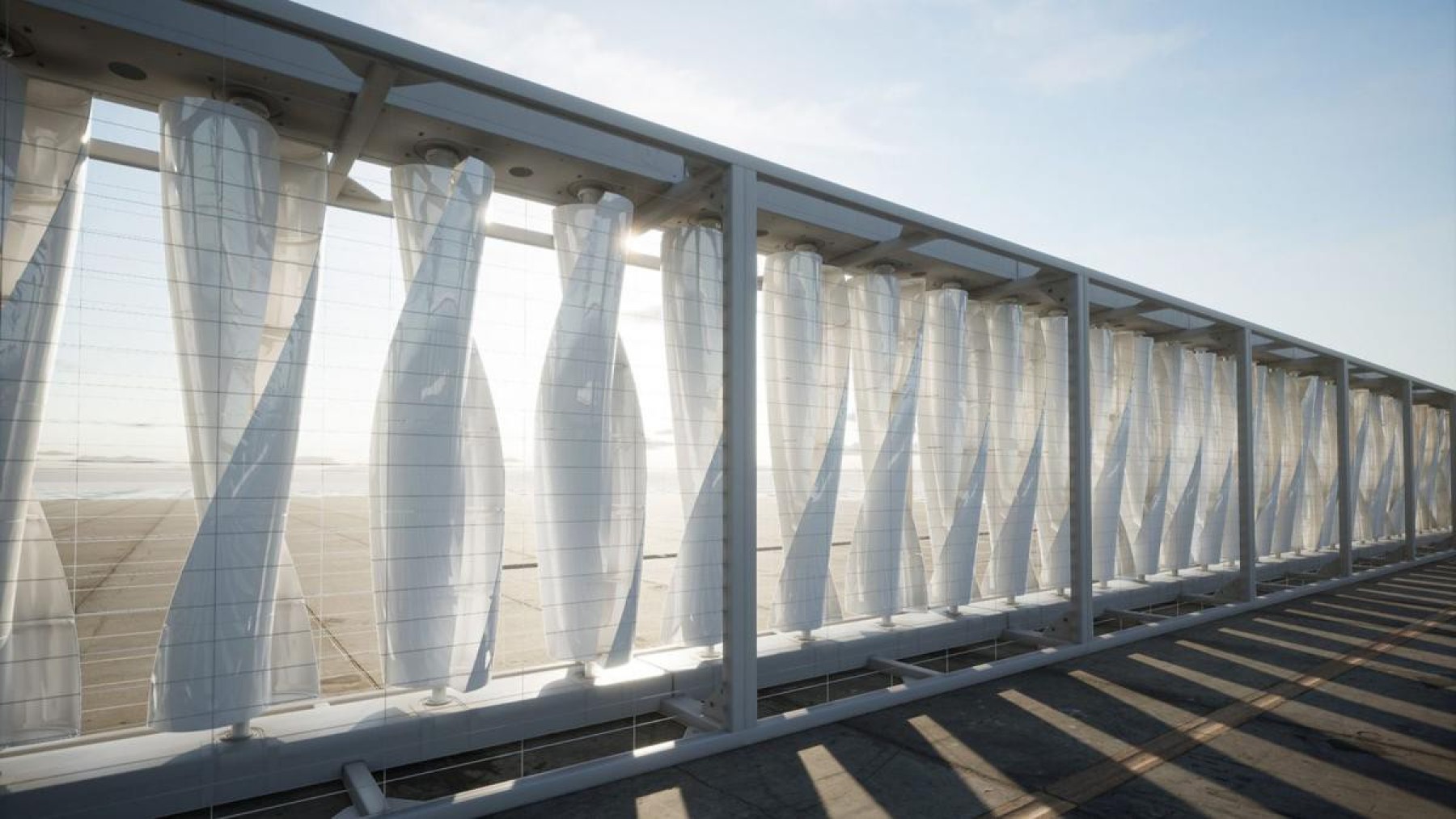Say goodbye to solar panels with this wind fence for your garden: 2200 kWh and quiet energy – ECOticias
Energy self-consumption is growing unevenly, but in all American states. However, the only source is not solar panels, or so we have just discovered. Did you know that there is a much better invention for your home? This is the wind fence that changes everything and that will make you generate up to 2200 kWh of free electricity 24 hours a day (especially when there is a storm, where photovoltaic is very short, as you know).
Why solar panels? A wind fence for your garden could be the future of energy self-consumption
Airiva Wind Fence is an innovation that has the potential to alter the current approach to power generation from renewable sources. In fact, this advanced solar system taps into the energy of wind rather than the sun; therefore, people could do away with solar panels completely.
The Airiva Wind Fence is a special type of structure that includes vertical strips that are placed in a definite matrix. These are typically arranged to harvest wind energy and then transform it into electrical energy. Thus, when the wind blows through the fences, the panels oscillate and this motion is utilized to turn the generators and, hence, generate electricity.
The developers of Airiva stated that an individual Airiva Wind Fence unit can be of sizes of 10 meters by 10 meters, and the company said that the unit is capable of producing up to 50 kw of electricity, which is sufficient to power a few residences or a small commercial establishment. This is a vast improvement over the usual photovoltaic solar cells, whose efficiency is much lower.
Airiva’s wind fence to get free electricity at home: 2200 kWh and “quiet energy”
The Airiva Wind Fence was innovated by a team of scientists, including engineers and researchers at a precipitating renewable energy research institute. It has been years of the development process, in which the team has tried to develop the design of the project and enhance the entire performance of the system.
This is why the main problem encountered during the design process of the Airiva Wind Fence is the choice of appropriate materials and construction methods for assembling the equipment that would meet the necessary level of stability and quality. The panels should endure daily vibration and stress from the wind and have reasonable prices for production and fitting.
Nevertheless, having such an opportunity, we can note that Airiva Wind Fence has already been used in a number of pilot projects all over the world, and the results look very encouraging. The team is now endeavoring to increase the level of production in order to make the technology more accessible to consumers and different businesses.
Some keys to understanding the “invention of the year”: No more solar panels if you install this
Perhaps one of the peculiarities of the Airiva Wind Fence that is worthy of discussion is that it can be applied as an element of architecture. Airiva is not a conventional wind turbine that needs vast stretches of land but can be mounted on the sides of buildings, fences, houses and commercial buildings’ roofs, inclusive.
It is this versatility that can lead to numerous possible uses of the technology – ranging from the provision of electricity at the household level to the achievement of a community’s renewable energy needs. The developers are also planning to install the Airiva Wind Fence together with other forms of renewable energy, like solar power systems, to develop additional and more complex functions.
As for the future development of the Airiva Wind Fence, the people behind the technology are already planning on how to enhance the structure and bring out better features that could make the technology more efficient and inexpensive. Such aspects consist of looking for new materials and approaches to production, as well as enhancing the sophistication of the control systems.
This Airiva wind fence is not only an opportunity to produce free energy in inclement weather, but also an ideal alternative to solar panels. This invention could go as far as its manufacturers want, especially in our country. What single-family house does not have a fence to delimit our garden? It is a sign of the identity of our architecture, and now it is also one more step in the ecological transition that we are doing so well (or so we think).


